About the Author
Frater U  D
D  , otherwise known as Ralph Tegtmeier, is a foremost practitioner and expert of modern Pragmatic Magic. Born in Egypt, he studied Eastern philosophy for many years before delving into the principles of Western magic. Previously an occult bookseller, he holds a masters degree in Comparative Literature and is a prolific writer and translator. His work has been published in The Lamp of Thoth and Chaos International. Frater U
, otherwise known as Ralph Tegtmeier, is a foremost practitioner and expert of modern Pragmatic Magic. Born in Egypt, he studied Eastern philosophy for many years before delving into the principles of Western magic. Previously an occult bookseller, he holds a masters degree in Comparative Literature and is a prolific writer and translator. His work has been published in The Lamp of Thoth and Chaos International. Frater U  D
D  f ounded Anubis, a German magazine of practical magic and psychonautics and has translated Peter Carrolls Liber Null & Psychonaut and Aleister Crowleys Book of Lies into German.
f ounded Anubis, a German magazine of practical magic and psychonautics and has translated Peter Carrolls Liber Null & Psychonaut and Aleister Crowleys Book of Lies into German.
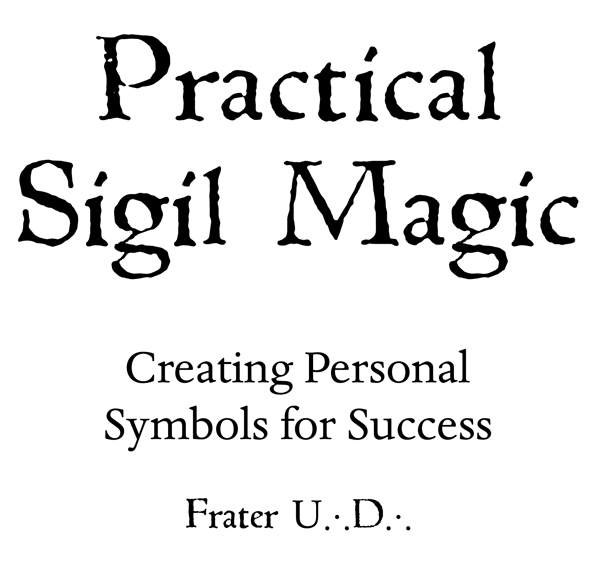
Translated from German by Ingrid Fischer
Revised and enlarged special edition for the Americas
Llewellyn Publications
Woodbury, Minnesota
Copyright Information
Practical Sigil Magic: Creating Personal Symbols for Success 2012 by Frater U D
D
All rights reserved. No part of this book may be used or reproduced in any matter whatsoever, including Internet usage, without written permission from Llewellyn Publications, except in the form of brief quotations embodied in critical articles and reviews.
As the purchaser of this e-book, you are granted the non-exclusive, non-transferable right to access and read the text of this e-book on screen. The text may not be otherwise reproduced, transmitted, downloaded, or recorded on any other storage device in any form or by any means.
Any unauthorized usage of the text without express written permission of the publisher is a violation of the authors copyright and is illegal and punishable by law.
First e-book edition 2012
E-book ISBN: 9780738732329
Cover design by Lisa Novak
Cover illustration Gary Hanna
Interior illustrations by the Llewellyn Art Department
Llewellyn Publications is an imprint of Llewellyn Worldwide Ltd.
Llewellyn Publications does not participate in, endorse, or have any authority or responsibility concerning private business arrangements between our authors and the public.
Any Internet references contained in this work are current at publication time, but the publisher cannot guarantee that a specific reference will continue or be maintained. Please refer to the publishers website for links to current author websites.
Llewellyn Publications
Llewellyn Worldwide Ltd.
2143 Wooddale Drive
Woodbury, MN 55125
www.llewellyn.com
Manufactured in the United States of America
Contents
: Austin Osman Spare and His Theory of Sigils
: Further Exploration of the Word Method
: The Magical Trance/Activating the Sigils
: The Pictorial Method
: The Mantrical Spell Method .
: The Alphabet of Desire
: Working with Atavistic Nostalgia
: But How Does It Work?
: Constructing Sigils with Planetary Cameas
Introduction
S igil magic, particularly the system developed by the English painter and sorcerer Austin Osman Spare, is one of the most efficient and economical disciplines of magic. For the most part, it can be performed without complicated rituals, needs hardly any paraphernalia, is independent of philosophical and dogmatic premises and, due to its simplicity, can be learned easily and quickly. Most important of all, none of the magical techniques we know of today is more efficient and will give even beginners the immediate chance to convince themselves of its power and their own abilities. These reasons alone support a volume like the following to show the possibilities of this discipline and to explain its techniques and its rationale. The readerthe complete tyro and the advanced practitioner alikewill receive an introduction which will accompany him/her in his/her magical practice for a long time to come.
You will find in this edition, in the following chapter, a reprint of my article Austin Osman Spare and His Theory of Sigils from the, alas, now-defunct German magazine Unicorn, issue 1/82. This issue has been out of print for quite some time, but many readers inquiries have shown that there is still much interest in this article, and it is increasing every day. Since the article also covers some of the historical and philosophical background of Spares sigil magic, it might be useful to present it here within a new context to a greater audience.
The word method explained in the article will be shown in greater depth in chapter 2. Further examples will be given, as well as comments and tips for practical use which you will rarely find in literature on this subject.
Next we will deal with the pictorial method, which has several advantages and disadvantages when compared to the word method. Again, in accordance with the title of this volume, magical practice will be of primary importance.
A description of the mantrical spell method will complete the techniques of sigil construction proper. It is my hope that examples and commentaries from my personal practice will provide you with many new suggestions.
Although Spares mysterious Alphabet of Desire belongs, technically speaking, to the pictorial method and in some respects touches the word method, it may nevertheless be considered the center of his magical achievement. Unfortunately, his own comments about it are rather vague. Therefore, most writers, being familiar with the subject on a theoretical level only, have caused much confusion rather than clarity when discussing it. Yet, it seems to me that the basic principle of this magical symbol language is amazingly simple if viewed in relation to Spares system as a whole.
The chapter The Alphabet of Desire, therefore, will not only offer a cursory comment on fragments from Spares rather chaotic legacy but introduce a mature system of symbol-logic, accessible to everyone. This certainly would have been Spares intent had he ever finished what has become known as the legendary Grimoire of Zos, i.e., had he completed it with explanatory comments for the magicians of his time.
Albeit Spares personal philosophy (which he himself termed the Zos Kia Cultus ) is not that important for sigil magic itself, we should not fail to mention his technique of Atavistic nostalgia, which is certainly one of the most fascinating applications of sigil magic. Furthermore, it marks its connection to Shamanism and so-called primitive magic, two disciplines from which todays magicians can only profit.
The main topic of the last chapter will concern planetary sigils from the Hermetic Tradition. Although experts have been familiar with the method of their construction for decades, little or no relevant literature has as yet been made available to a wider public. It, therefore, seemed pertinent to treat this subject matter here.
The reader will note that in this volume we concentrate on creating personal , that is to say, individual sigils. This is a completely different approach compared to the tendency of many other books, which usually prefer to list traditional, largely mutilated or inaccurately reproduced sigils taken from the magical cookbooks of generally obscure authors with little or no practical experience of their own. Although the planetary sigils discussed at the end of this study are taken from the work of Agrippa of Nettesheim, who is above all criticism in this respect, a single glance at other standard works about magical symbols will show that most magicians and alchemists in the Middle Ages (the supposed peak of Occidental magic) largely developed their own sigil language using a rather small number of well-established symbols. The myth that there is a small number of correct sigils and a great variety of wrong ones for entities (generally demons), whose names are often little else but mutilations of misunderstood older terms, has confused the minds of even highly experienced old hands. Such misinformation should no longer be tolerated.
Next page
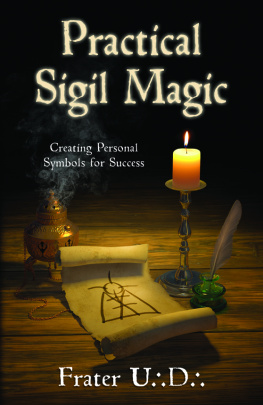




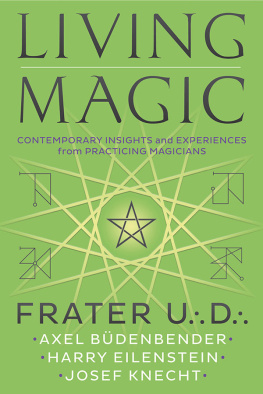
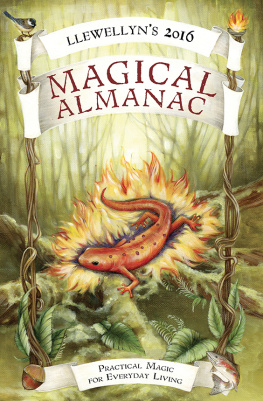
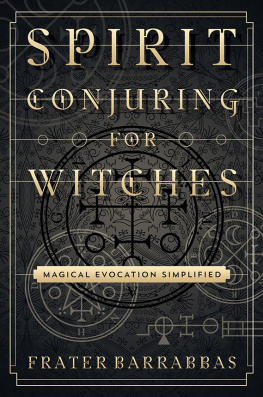
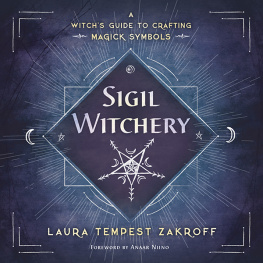
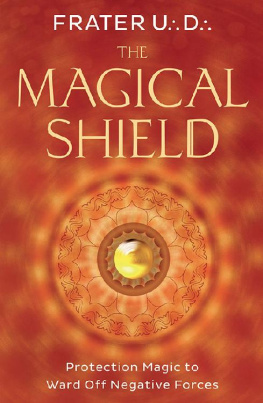
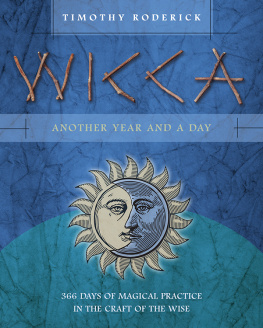
 D
D  , otherwise known as Ralph Tegtmeier, is a foremost practitioner and expert of modern Pragmatic Magic. Born in Egypt, he studied Eastern philosophy for many years before delving into the principles of Western magic. Previously an occult bookseller, he holds a masters degree in Comparative Literature and is a prolific writer and translator. His work has been published in The Lamp of Thoth and Chaos International. Frater U
, otherwise known as Ralph Tegtmeier, is a foremost practitioner and expert of modern Pragmatic Magic. Born in Egypt, he studied Eastern philosophy for many years before delving into the principles of Western magic. Previously an occult bookseller, he holds a masters degree in Comparative Literature and is a prolific writer and translator. His work has been published in The Lamp of Thoth and Chaos International. Frater U  D
D  f ounded Anubis, a German magazine of practical magic and psychonautics and has translated Peter Carrolls Liber Null & Psychonaut and Aleister Crowleys Book of Lies into German.
f ounded Anubis, a German magazine of practical magic and psychonautics and has translated Peter Carrolls Liber Null & Psychonaut and Aleister Crowleys Book of Lies into German.
 D
D